The Barbican Art Centre has been covered in a gigantic bright pink wrapper providing a sharp contrast to the rest of the Brutalist estate.
This is Purple Hibiscus, a monumental site-specific artwork by the Ghanaian artist Ibrahim Mahama created from some 2,000 square metres of bespoke woven cloth created by women weavers and sewing collectives in Ghana.
It’ll probably remind many of the works by Christo artistic duo, where the two partnered to cover buildings in sheets of fabric. The difference is that Christo used to accentuate the architecture by using plain fabrics, whereas Mahama is more of a richly decorated fabric draped over the building.
Embroidered onto the cloth are approximately 100 ‘batakaris’ – robes worn by Northern Ghanaian royals and ordinary people – which Mahama has collected through a process of exchange and barter from numerous communities across Northern Ghana.
These precious textiles, often saved by families over generations, tucked away in wardrobes or stored below beds, carry the imprints of the lives, lineage and power of the figures they once clothed. Worn, degraded and bearing traces of years of use, these smocks are testaments to the endurance of traditional belief systems, and the continued relevance of intergenerational knowledge.
By incorporating these smocks into the artwork, Mahama is continuing his interest in textile life cycles and what can be learned from the historical memories embedded within them.
What all that means though is that the Barbican’s lakeside frontage has transformed from dour grey into shocking pink.
It’s also an installation that presents several different aspects as you wander around. You might initially think that it’s something to look at from a distance, and indeed for the scale of it, views from the surrounding walkways do work best.
A number of QR code information signs are dotted around the Barbican’s walkways a bit like the viewing point signs you see on the tops of hills telling you what you’re looking at. If you’re on the other side of the lake, you can also see a rather nice pinkish reflection in the green water.
However, unexpectedly, it’s close up to the art that it takes on a different aspect when you walk underneath it. It hangs over the entrance doors of the art centre and a space that’s usually open to the air now feels more like walking into a huge tent.
Maybe it’s something that’s felt more strongly by regular visitors to the Barbican, as walking into the tented space was a surprise when coming out of the art centre.
Doubtless, as an artwork, it’ll generate many “humourous” comments about what can be done to cover up the brutalist concrete, but it’s the temporary intrusion that gives it such an impact against the background of the rest of the estate.
The commission forms part of the Unravel: The Power & Politics of Textiles in Art exhibition which is in the art gallery until 26th May 2024.
This external artwork will be in place until August 2024, and being outdoors, it’s free to have a look at.
Installation Photos:

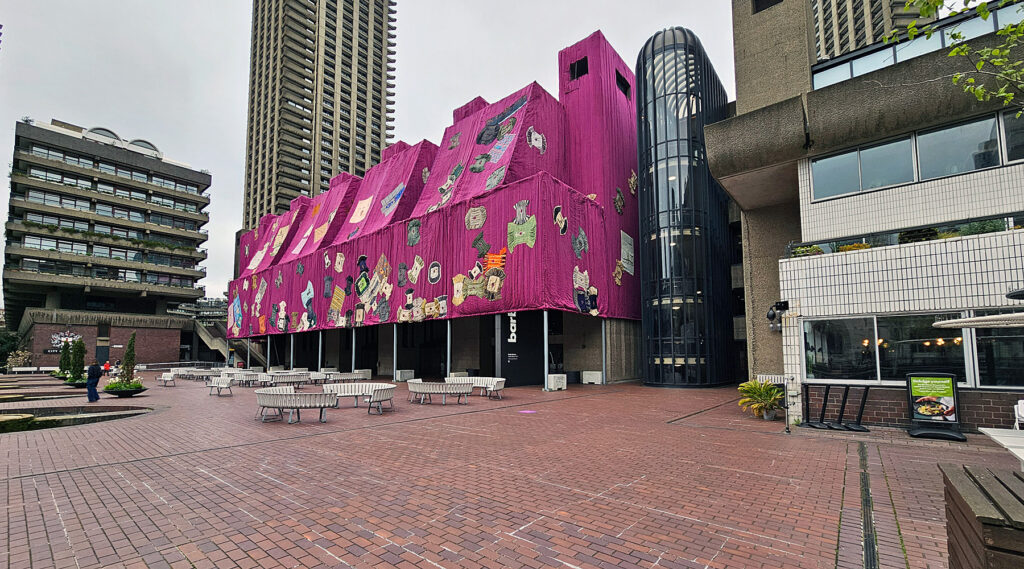
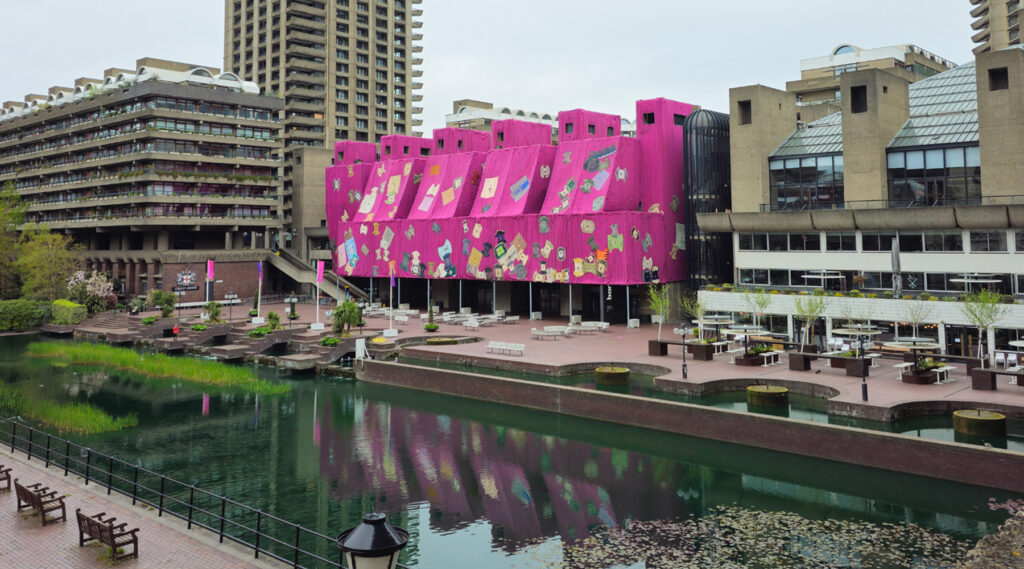
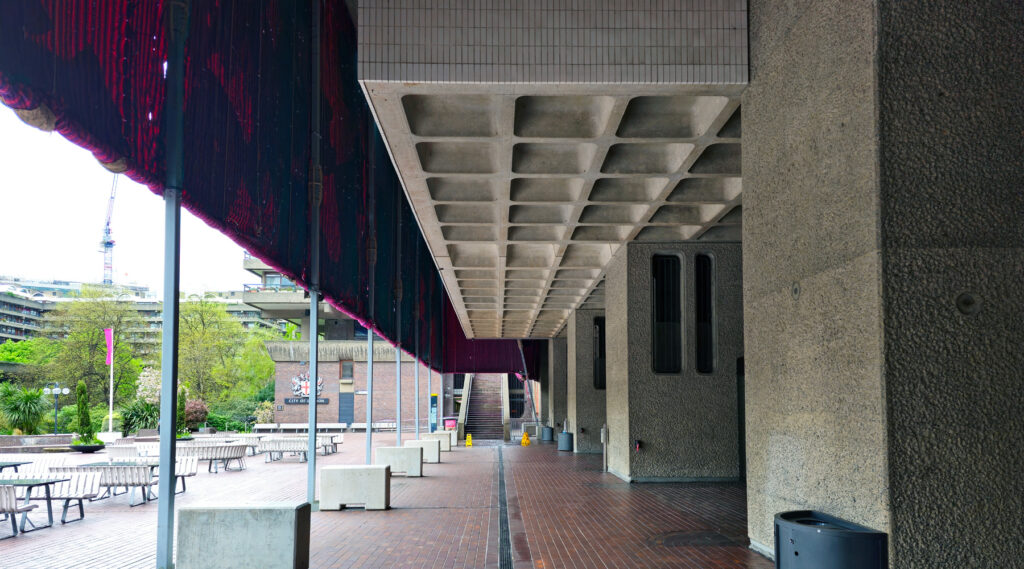
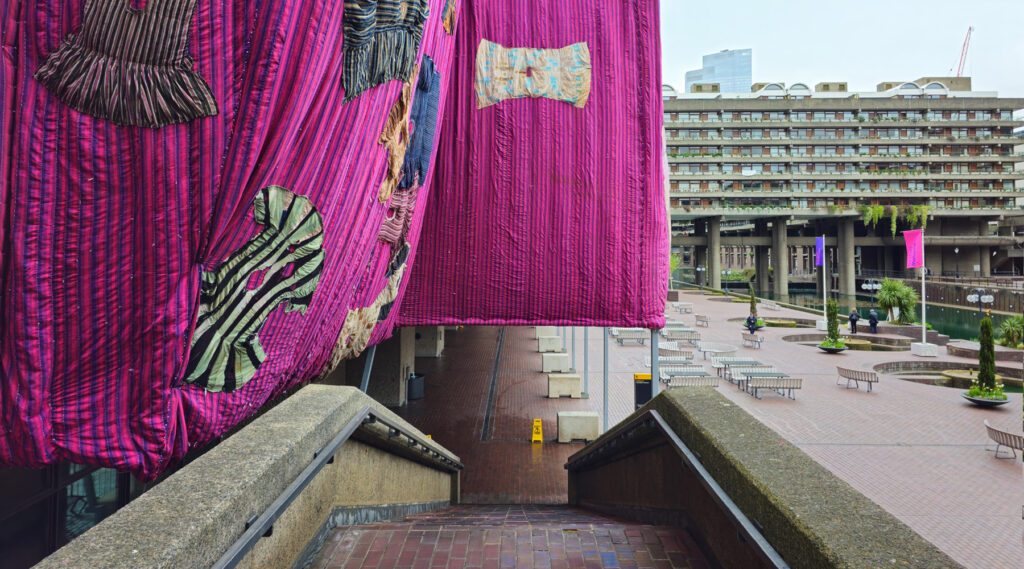
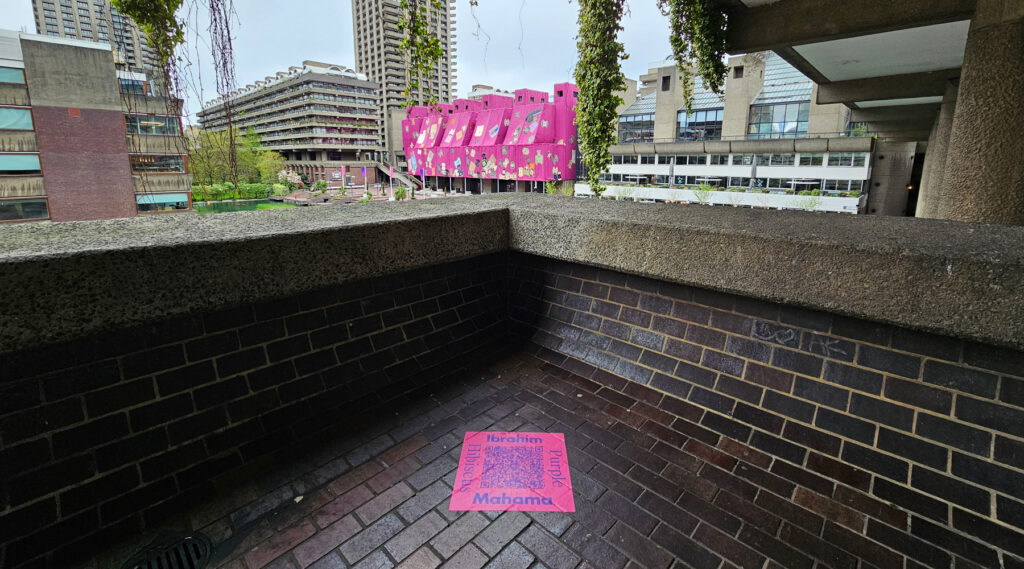
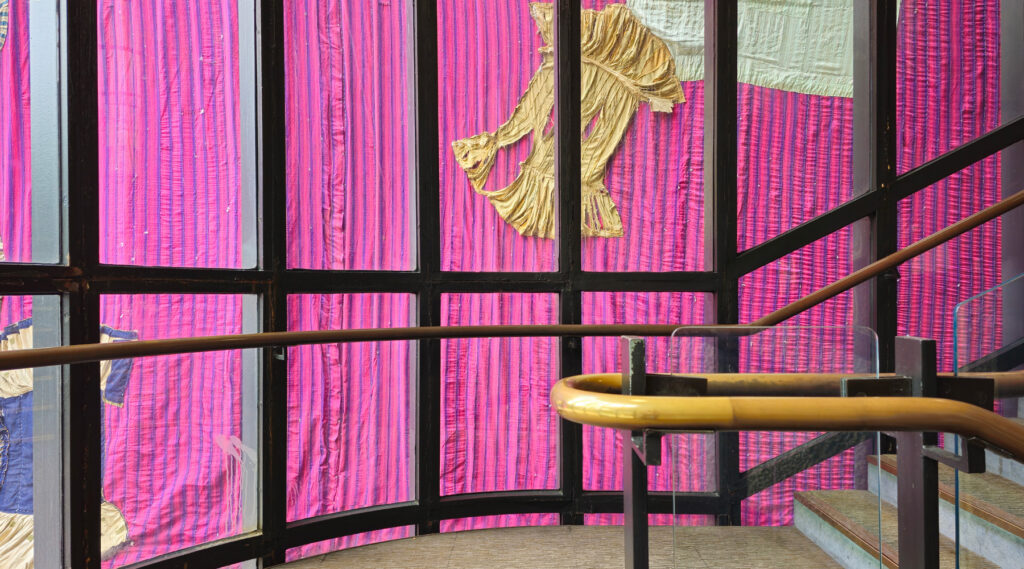
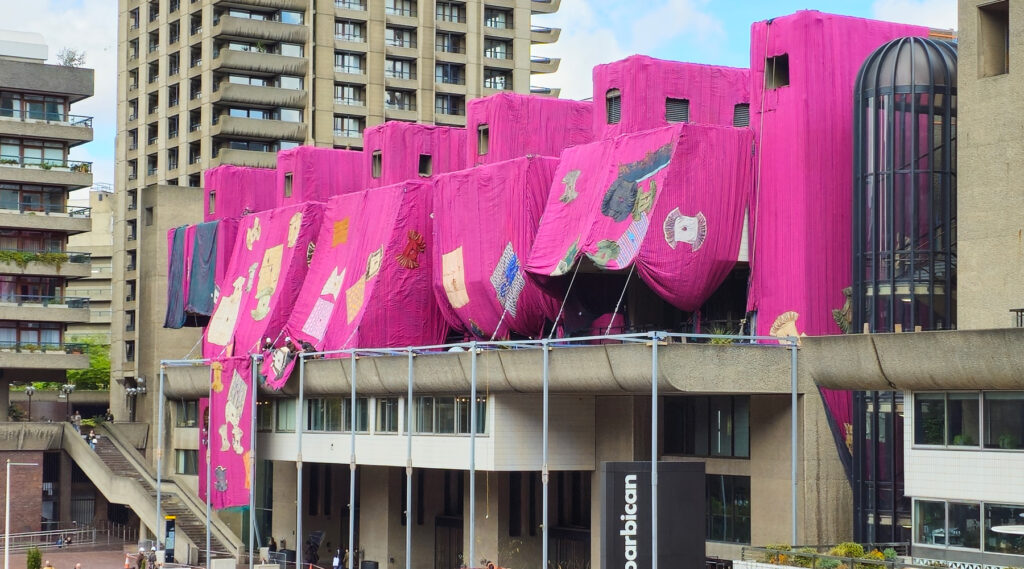
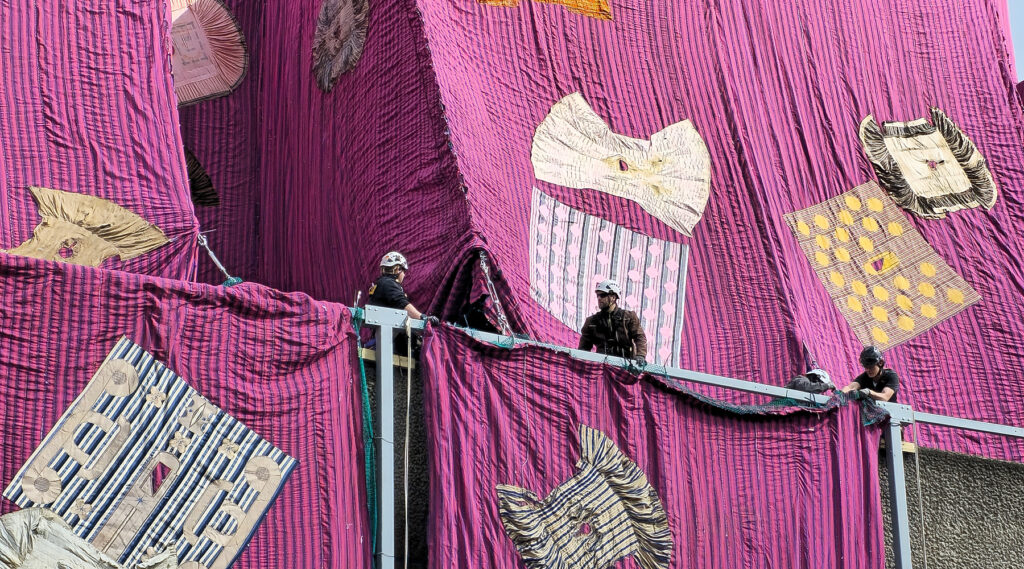






The primary reaction this artwork provokes in Barbican library users is “why have they thoughtlessly shrouded the windows to deny natural daylight into the periodicals reading section?”.